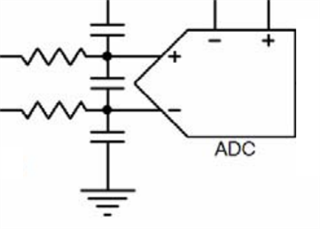Any idea where I could find the CMRR vs frequency graph of the ADS114S06 differential input?
Also, the same for the PSRR of the internal 2.5V reference?
The datasheet only mentions values at DC or at 50/60 Hz.
I have an application where a bridge sensor is being excited by the 2.5V internal reference of the chip and read with PGA enabled and set to 32 gain.
We have issues with common mode RF noise in the 61000-4-6 test appearing in the output of the ADC. This occurs between 40-80 MHz.
It appears as a sudden offset shift at certain noise frequencies.
We have this kind of a low pass filter circuit at the sensor interface, but I'm considering eliminating the series resistances and common mode capacitors to improve CMRR.
Problem is, I can't find the actual CMRR at those specific frequencies in order to decide whether I'd have to add an external common mode choke.


